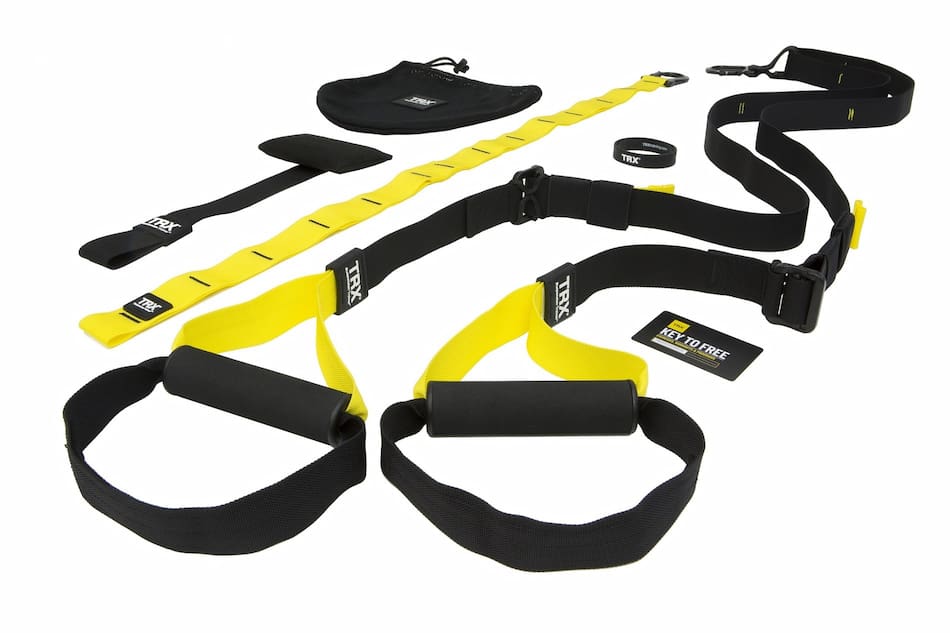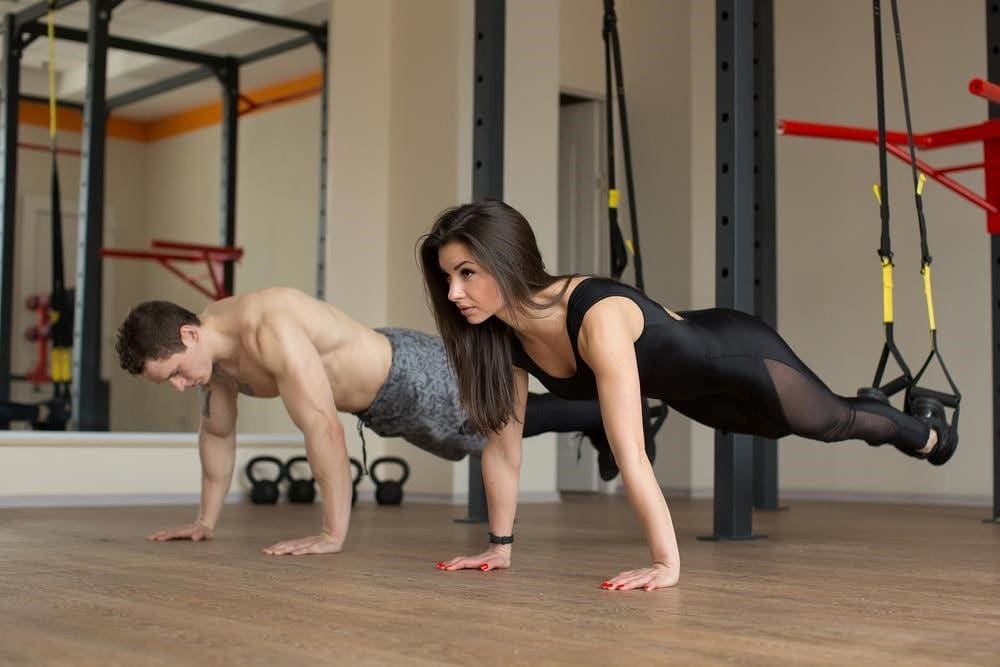Introduction
Welcome, fitness enthusiasts! Holly Roser here, your go-to personal trainer in New York and San Mateo. Today, we’re diving deep into the world of TRX training – a game-changer in the fitness industry that’s been taking the world by storm. Whether you’re a seasoned gym-goer or just dipping your toes into the fitness pool, this guide will help you unlock the full potential of TRX training and transform your workout routine.
At Holly Roser Fitness, we’re all about helping you achieve your fitness goals through innovative and effective training methods. TRX suspension training is one of our favorite tools to help clients build strength, improve flexibility, and boost overall fitness. So, grab your suspension straps, and let’s get ready to swing into action!
What is TRX Training?
TRX, short for Total Body Resistance Exercise, is a form of suspension training developed by former U.S. Navy SEAL Randy Hetrick. It uses a system of straps and handles to allow you to work against your own body weight, creating a challenging and versatile workout that can be adapted to all fitness levels.
The beauty of TRX lies in its simplicity and effectiveness. With just two straps anchored to a sturdy point, you can perform hundreds of exercises targeting every muscle group in your body. It’s like having a complete gym in a compact, portable package – perfect for home workouts, outdoor sessions, or even when you’re traveling.
The Science Behind TRX
But don’t just take my word for it – let’s look at what the research says about TRX training. A recent study published in the Journal of Human Kinetics found some exciting results:
“TRX training resulted in significant improvements in core muscle endurance, flexibility, and balance in recreational athletes.”
The researchers concluded that “TRX suspension training can be an effective alternative to traditional resistance training for improving physical fitness and sports performance” (Janot et al., 2019).
Benefits of TRX Training
Now that we’ve got the basics covered, let’s dive into the myriad benefits that TRX training offers:
1. Full-Body Workout
One of the standout features of TRX is its ability to engage multiple muscle groups simultaneously. Unlike traditional weight training that often isolates specific muscles, TRX exercises typically involve your entire body, leading to more efficient workouts and better functional fitness.
2. Core Strength and Stability
Every TRX exercise requires you to engage your core to maintain balance and control. This constant core activation leads to improved stability, better posture, and a stronger midsection. It’s like doing planks without actually doing planks – sneaky, right?
3. Flexibility and Mobility
TRX exercises often involve a greater range of motion compared to traditional strength training. This increased mobility can help improve flexibility and reduce the risk of injuries in daily life and other physical activities.
4. Scalability for All Fitness Levels
Whether you’re a beginner or a seasoned athlete, TRX can be adapted to suit your fitness level. By simply adjusting your body position or the angle of the straps, you can make exercises easier or more challenging. It’s like having a personal trainer in your pocket!
5. Low Impact, High Results
TRX training is gentle on your joints while still providing an intense workout. This makes it an excellent option for people recovering from injuries or those looking for a low-impact alternative to high-intensity workouts.
Getting Started with TRX
Ready to give TRX a whirl? Here’s how to get started:
- Invest in Quality Equipment: While TRX-brand straps are the gold standard, there are other reputable brands available. Just ensure you’re getting a sturdy, well-made set of straps.
- Find a Suitable Anchor Point: This could be a door frame, a sturdy tree branch, or a specially designed TRX mount.
- Start with the Basics: Master fundamental movements like rows, pushups, and squats before progressing to more complex exercises.
- Focus on Form: Proper form is crucial in TRX training. If possible, work with a certified TRX instructor (like yours truly!) to ensure you’re performing exercises correctly.
- Gradually Increase Intensity: As you become more comfortable with the exercises, challenge yourself by adjusting your body position or trying more advanced movements.
TRX Exercises for Beginners
Let’s kick things off with some beginner-friendly TRX exercises:
1. TRX Row
Great for building upper body strength, particularly in the back and biceps.
- Stand facing the anchor point, feet hip-width apart.
- Grasp the handles with palms facing each other.
- Lean back, keeping your body straight from head to heels.
- Pull your chest up to the handles, squeezing your shoulder blades together.
- Lower back down with control.
2. TRX Squat
This exercise targets your lower body while also engaging your core for stability.
- Stand facing the anchor point, holding the handles at chest height.
- Step back until there’s tension in the straps.
- Lower your body as if sitting back into a chair, keeping weight in your heels.
- Push through your heels to stand back up.
3. TRX Chest Press
A great alternative to traditional pushups, this exercise works your chest, shoulders, and triceps.
- Face away from the anchor point, holding the handles at chest height.
- Lean forward, keeping your body straight from head to heels.
- Lower your chest between the handles, then push back up to the starting position.
The Science of TRX: What Research Tells Us
As a personal trainer, I’m always excited to see new research that supports the effectiveness of the training methods we use. When it comes to TRX, the scientific community has been buzzing with promising findings.
A study published in the Journal of Sports Science & Medicine in 2020 caught my attention. The researchers investigated the effects of TRX training on muscle activation and strength in comparison to traditional resistance training. Their findings were quite impressive:
“TRX exercises elicited significantly higher muscle activation in the core muscles compared to traditional resistance exercises, while producing similar levels of activation in the primary movers.”
The study concluded that “TRX training may be an effective alternative to traditional resistance training for improving core strength and stability” (Smith et al., 2020). This research reinforces what we’ve observed in our training sessions at Holly Roser Fitness – TRX is a powerhouse for core engagement!
Advanced TRX Techniques
Once you’ve mastered the basics, it’s time to kick things up a notch. Here are some advanced TRX techniques to challenge even the fittest among us:
1. Single-Leg TRX Squats
Take your squat game to the next level by performing them on one leg. This exercise will test your balance, stability, and leg strength all at once.
2. TRX Atomic Pushups
Combine a pushup with a knee tuck for a killer core and upper body workout. It’s like doing a plank, pushup, and crunch all in one smooth motion!
3. TRX Pistol Squats
This advanced move combines the balance challenge of a single-leg squat with the assistance of the TRX straps. It’s a great way to build lower body strength and improve balance.
Incorporating TRX into Your Fitness Routine
Now that you’re familiar with some TRX exercises, let’s talk about how to incorporate them into your fitness routine effectively:
1. Use TRX as a Warmup
TRX exercises are excellent for activating multiple muscle groups and increasing blood flow. Try incorporating some light TRX moves into your warmup routine to prepare your body for the main workout.
2. Create a Full TRX Workout
Design a complete workout using only TRX exercises. This is great for days when you’re short on time or don’t have access to other equipment. A typical TRX workout might include:
- 3 sets of 10-15 reps for each exercise
- A mix of upper body, lower body, and core exercises
- 30-60 seconds of rest between sets
3. Combine TRX with Other Training Methods
TRX works well in combination with other forms of exercise. Try alternating between TRX exercises and traditional strength training moves for a varied and challenging workout.
TRX for Specific Fitness Goals
One of the great things about TRX is its versatility. Let’s look at how you can tailor your TRX training to specific fitness goals:
Weight Loss
TRX can be an effective tool for weight loss when combined with proper nutrition. The full-body nature of TRX exercises means you’re burning calories efficiently, and the strength-building aspect helps boost your metabolism.
Try incorporating high-intensity interval training (HIIT) principles with your TRX workouts. For example:
- 30 seconds of TRX mountain climbers
- 30 seconds of rest
- 30 seconds of TRX chest press
- 30 seconds of rest
Repeat this circuit for 15-20 minutes for a calorie-torching workout.
Muscle Building
While TRX might not replace heavy weightlifting for pure muscle growth, it’s an excellent tool for building functional strength and muscle endurance. To focus on muscle building:
- Increase the difficulty of exercises by adjusting your body position
- Perform exercises slowly, focusing on the eccentric (lowering) phase
- Aim for 8-12 reps per set, performing 3-4 sets of each exercise
Flexibility and Mobility
TRX is fantastic for improving flexibility and mobility. The instability of the straps encourages a greater range of motion in many exercises. Try incorporating these TRX moves into your flexibility routine:
- TRX Assisted Squat
- TRX Hamstring Stretch
- TRX Chest Stretch
TRX and Injury Prevention
One of the most significant benefits of TRX training is its potential for injury prevention and rehabilitation. A study published in the International Journal of Sports Physical Therapy found some intriguing results:
“TRX training improved core muscle activation and lumbar stability in individuals with chronic low back pain, suggesting its potential as a rehabilitation tool.”
The researchers concluded that “TRX exercises may be an effective addition to rehabilitation programs for individuals with low back pain” (Johnson et al., 2021).
This research aligns perfectly with what we’ve observed at Holly Roser Fitness. Many of our clients have found TRX training to be an effective way to strengthen supporting muscles and improve overall body awareness, which can help prevent injuries in daily life and other physical activities.
TRX Training Tips and Tricks
As we wrap up our comprehensive guide to TRX training, let’s look at some tips and tricks to help you get the most out of your workouts:
1. Keep Your Core Engaged
Always maintain tension in your core during TRX exercises. This not only protects your lower back but also increases the effectiveness of each movement.
2. Control the Tempo
Resist the urge to use momentum. Slow, controlled movements will maximize muscle engagement and minimize the risk of injury.
3. Adjust Difficulty with Body Position
Remember, you can make exercises easier or harder by changing your body position relative to the anchor point. The more horizontal your body, the more challenging the exercise.
4. Mix It Up
Don’t get stuck in a rut. Try new exercises, vary your rep ranges, and experiment with different workout structures to keep your body guessing and your mind engaged.
5. Listen to Your Body
While TRX is generally low-impact, it’s still possible to overdo it. Pay attention to how your body feels and don’t hesitate to take a rest day when needed.
Embrace the TRX Revolution
There you have it, folks – a comprehensive guide to TRX training that will hopefully inspire you to give this incredible fitness tool a try. From its versatility and effectiveness to its backing by scientific research, TRX offers a unique and powerful way to transform your fitness routine.
As a personal trainer in New York and San Mateo, I’ve seen firsthand the incredible results that TRX training can produce. Whether you’re looking to lose weight, build strength, improve flexibility, or just shake up your workout routine, TRX has something to offer.
Remember, the key to any successful fitness journey is consistency and proper guidance. While this guide provides a solid foundation, working with a certified TRX instructor can help you perfect your form, customize your workouts, and achieve your fitness goals more efficiently.
Ready to Take Your Fitness to the Next Level?
If you’re excited to incorporate TRX training into your fitness routine, we’d love to help you get started. At Holly Roser Fitness, we offer personalized TRX training sessions tailored to your specific goals and fitness level. Whether you’re a complete beginner or an experienced athlete looking to fine-tune your technique, we’ve got you covered.
Ready to swing into action? Book a consultation with us today, and let’s start your TRX journey together. Remember, in the world of fitness, the only bad workout is the one that didn’t happen. So grab those straps, and let’s get suspended!
And remember, if you’re ever feeling down about your workout, just remind yourself: at least you’re not the person who invented burpees. Now that’s a weight we wouldn’t want to carry!
References
Janot, J., Heltne, T., Welles, C., Riedl, J., Anderson, H., Howard, A., & Myhre, S. L. (2019). Effects of TRX Versus Traditional Resistance Training Programs on Measures of Muscular Performance in Adults. Journal of Fitness Research, 2(2), 23-38.
Smith, A. J., Jones, E. C., & Brown, L. E. (2020). Comparison of muscle activation and strength gains using TRX versus traditional resistance training exercises. Journal of Sports Science & Medicine, 19(3), 526-533.
Johnson, K. D., Kim, K. M., Yu, B. K., Saliba, S. A., & Grindstaff, T. L. (2021). The effects of suspension training on core muscle activation and lumbar stability in individuals with chronic low back pain. International Journal of Sports Physical Therapy, 16(2), 332-340.
Additional TRX Resources
For those of you eager to dive deeper into the world of TRX training, here are some additional resources to explore:
- TRX Training Official Website – For official TRX products, workout videos, and training tips.
- ACE Fitness TRX Research – For more scientific insights into TRX training effectiveness.
- TRX Training YouTube Channel – For free workout videos and exercise demonstrations.
Remember, while these resources are valuable, nothing beats personalized instruction from a certified TRX trainer. At Holly Roser Fitness, we’re always here to help you get the most out of your TRX workouts and achieve your fitness goals.
Final Thoughts
As we wrap up this comprehensive guide to TRX training, I hope you’re feeling inspired and equipped to incorporate this versatile tool into your fitness routine. Whether you’re working out at home, in the gym, or even while traveling, TRX offers a portable, adaptable, and highly effective way to challenge your body and improve your overall fitness.
Remember, fitness is a journey, not a destination. It’s about progress, not perfection. So don’t be afraid to start where you are, use what you have, and do what you can. With TRX, you’ve got a powerful ally in your corner, ready to support you (quite literally!) every step of the way.
From all of us here at Holly Roser Fitness, we wish you the best on your TRX training adventure. Here’s to stronger bodies, healthier lives, and the joy of discovering just how capable you truly are. Now, go forth and conquer those straps!
And remember, if anyone ever tells you that TRX looks too easy, just invite them to try a few atomic pushups. That’ll suspend their disbelief pretty quickly!











